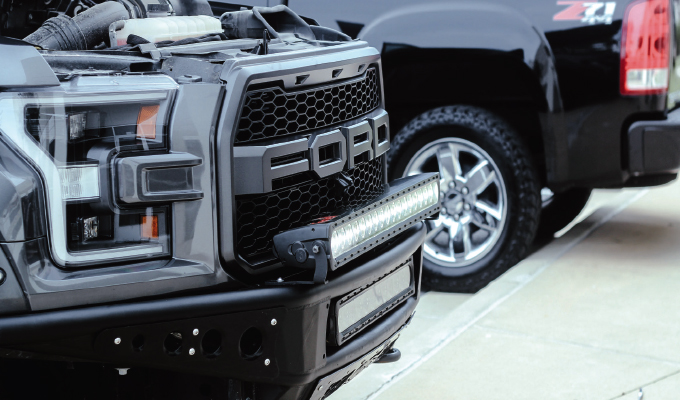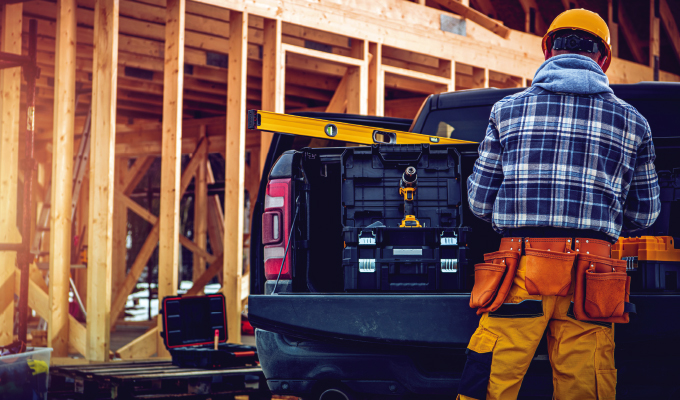By Ryan Matejka
The global microchip shortage has had a serious impact on all aspects of the automotive industry, especially commercial fleets, over the last two years. The pandemic’s effect on supply chains have turned the scarcity of inventory into a bigger challenge than many expected. While there’s no definite timeline, analysts say that the normal supplies of vehicles we’re used to aren’t likely to return until the end of 2022, perhaps even into early 2023. With that in mind, it’s important to consider how commercial vehicle purchases need to be navigated and how best to plan appropriately to prevent issues going forward.
PLAN AHEAD
The chip shortage isn’t going away anytime soon, and even when it does it will take dealerships many months to rebuild inventory levels. Buyers must plan their vehicle acquisition needs further in advance than in years past. In fact, it’s recommended that commercial vehicle buyers consider shopping six to 12 months in advance of need. That may seem like an extreme amount of time, but for most commercial buyers your vehicles are tools of the trade. The most popular such “tool” over the past 30 years has largely been the Ford F-150. Highlighting this inventory shortage issue, Ford released an internal dealership memo stating as of mid-May, Ford would not take additional orders for almost all 2022 F-150 models. Orders would only resume in mid-July for 2023 models.
Even if you can find the appropriate vehicle for your fleet, expect to pay at, or sometimes above, MSRP. This is yet another reason why it’s important to plan well ahead of time to prepare for this new circumstance.
SHOP AROUND
Many commercial buyers have long-standing relationships with their preferred dealers. Unfortunately, in order to more quickly acquire the fleet inventory your business needs, you may need to contact multiple dealers. The best way to contact a dealer is through a simple RFP (Request For Proposal). Fortunately, the process isn’t very complicated. In most cases, you’ll want to visit the dealer’s website, navigate to the “Meet the Staff Page” or, if there isn’t one listed, just call the dealer and ask the receptionist for the fleet manager and general manager’s email addresses. To ensure you get enough responses to make the best decision for your purchase, you’ll want to send the same RFP email to as many dealers as you can find that meet your criteria.

CONSIDER ALTERNATIVES
Due to the challenging landscape, it can be beneficial to consider an alternative vehicle make or model to find the necessary inventory to meet your needs. Take for example Rich McGranahan, who owns Express Appliance Service based out of New Jersey. The company had 22 trucks on the road and faced a dilemma. The Nissan NV200s and Ram ProMaster City vans previously purchased didn’t have the same incentives as they once did, and the wait was longer than Express Appliance Service anticipated. The solution was to turn to Toyota Rav4s in lieu of the model they had previously regularly purchased.
“We liked our work vans, but in retrospect the extra space was a crutch to carry parts and tools that we rarely, if ever, used,” McGranahan says. “Shrinking our vans to smaller passenger SUVs gives us better fuel economy, more driver comforts for our repairmen, better reliability, and better resale values.”
Clearly not all businesses can make a full pivot like this, but in many cases it could be beneficial for some vehicles to be shrunk into (slightly) more available passenger vehicles. As they say, necessity is the mother of invention—and the current inventory shortage and corresponding high prices means some businesses could benefit from creativity when searching for commercial vehicles to purchase.
REPAIR NOT REPLACE
For some businesses, like those with specialized needs or firm budgets, the best alternative to replacing fleet vehicles may be to invest in repairing vehicles rather than purchasing new ones. Engines, transmissions, suspensions, and even worn driver seats can be replaced with relative ease and when done, can breathe new life into older fleet vehicles.
Most fleet vehicles have a defined “useful life,” but the current vehicle sales environment could not have been predicted in a pre-pandemic world. If purchasing a new vehicle proves to be a challenge (and as we’ve seen, it certainly is for many), a few fixes or replacements here and there could make a major impact and help solve problems.
THE LONG HAUL
As already discussed, it’s understood that the 2020-2022 vehicle inventory shortage may take years to wash through the automotive industry. The lack of production that’s occurred over the past 18 months (and counting) clearly impacted current availability and values. The sobering truth is that even if vehicle inventory were to miraculously return to pre-pandemic levels today, the industry would still see shortages.
Another thing to consider is that due to less vehicles produced in 2020, there will be less vehicle trades in 2022, 2023, and 2024. This pattern will likely continue to impact vehicle values and availability for years to come. That’s why it’s important to be as prepared and open-minded as possible when making plans for commercial vehicle purchases. That said, even the best laid plans may not solve every obstacle you encounter in the coming months and years, so there should also be a certain amount of bearing down until the situation improves.
THE TAKEAWAY
As we’ve seen, the impact of the current chip shortage and vehicle inventory shortage is very likely to be around for a while, which is why it’s absolutely critical for businesses relying on commercial fleets to plan ahead, be proactive, and consider alternatives wherever possible. There are certainly vehicles out there, but many dealers are holding out for a premium, which is also not likely to change any time soon and ultimately becomes a math problem. Businesses that consider these strategies are the most likely to thrive and survive while we all collectively wait for things to get better.
ABOUT THE AUTHOR
Ryan Matejka is COO and co-founder of Redline. He holds an MA in corporate communications from Rowan University. As a lifelong “car guy,” Ryan is responsible for growing Redline to a three-time Inc5000 winner, providing dealership photography and marketing services for over 1,000 dealerships nationwide. Find out more, visit www.redlineadvantage.com.




